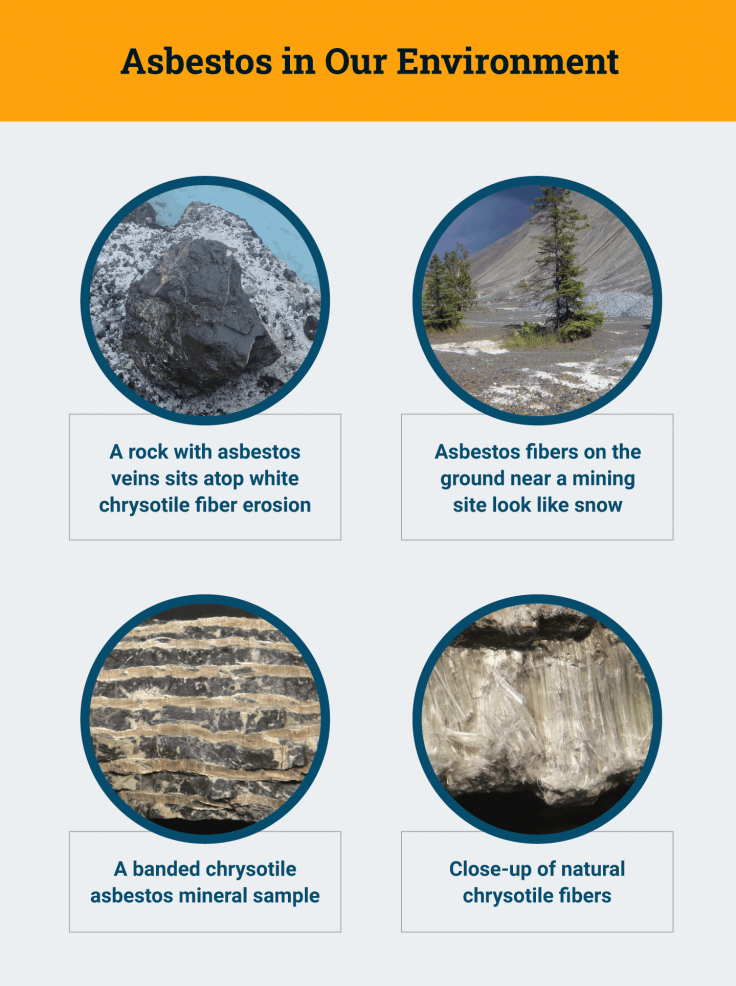Asbestos manufacturer
 Introduction
Introduction
As someone who has personally witnessed the devastating effects of asbestos exposure, I am passionate about raising awareness and advocating for public health and safety.
Asbestos is a naturally occurring mineral that was widely used in construction materials due to its strength, durability, and fire-resistant properties.
However, it wasn't until years later that we discovered the harmful health risks associated with asbestos exposure.
History of Asbestos Use and Health Risks
 Asbestos has been used for centuries, but it wasn't until the Industrial Revolution that it became widely used in manufacturing and construction.
Asbestos has been used for centuries, but it wasn't until the Industrial Revolution that it became widely used in manufacturing and construction.
In the 20th century, asbestos was commonly used in insulation, roofing, flooring, and other building materials.
Health Risks of Asbestos
Unfortunately, those who worked with or around asbestos were at risk of developing serious health conditions such as lung cancer, mesothelioma, and asbestosis.
These diseases can take years or even decades to develop, and symptoms may not appear until the disease is in its advanced stages.
Regulations on Asbestos Use
Due to the health risks associated with asbestos, regulations have been put in place to limit its use.
In the United States, the Environmental Protection Agency (EPA) regulates the use and disposal of asbestos.
The use of asbestos in new construction has been banned since 1989, but it is still present in many older buildings.
Asbestos-related diseases can take years or even decades to develop, and symptoms may not appear until the disease is in its advanced stages.
Asbestos Removal
If you suspect that your home or workplace contains asbestos, it is important to have it removed by a professional.
Attempting to remove asbestos yourself can be dangerous and may result in exposure to harmful fibers.
Regulations have been put in place to limit the use of asbestos, but it is still present in many older buildings.
Protecting Yourself from Asbestos
If you work in an industry that may expose you to asbestos, it is important to take precautions to protect yourself.
This may include wearing protective clothing and equipment, following safety procedures, and getting regular medical check-ups.
- Wear protective clothing and equipment
- Follow safety procedures
- Get regular medical check-ups
The Top Asbestos Manufacturers in 2023
 Asbestos is a dangerous material that poses serious health risks to those who are exposed to it.
Asbestos is a dangerous material that poses serious health risks to those who are exposed to it.
Despite this, there are still companies that continue to produce and use asbestos for their products.
In 2023, some of the top asbestos manufacturers include:
- Russian Asbestos Company
- Brazilian Asbestos Company
- Kazakhstan Asbestos Company
These companies prioritize their profits over the health and safety of the public, despite the overwhelming evidence of the dangers of asbestos exposure.
It is important for individuals and organizations to be aware of these companies and take action to prevent the use of asbestos in products.
The Dangers of Asbestos Exposure
Exposure to asbestos can lead to serious health problems, including lung cancer, mesothelioma, and asbestosis.
These diseases can take years to develop and can be fatal.
Asbestos fibers can be inhaled or ingested, and can become lodged in the body, causing damage over time.
According to the World Health Organization, around 125 million people are exposed to asbestos in the workplace, and over 107,000 deaths are caused by asbestos-related diseases each year.
It is important to take precautions to avoid exposure to asbestos, such as wearing protective gear and avoiding areas where asbestos is present.
The Importance of Regulation
Regulation is crucial in preventing the use of asbestos in products and protecting public health.
Governments and organizations must work together to enforce regulations and hold companies accountable for their actions.
In the United States, the Environmental Protection Agency (EPA) has banned the use of asbestos in certain products, but there is still no comprehensive ban on the use of asbestos.
It is important for individuals to advocate for stronger regulations and hold companies accountable for their actions in order to protect public health and safety.
Controversies Surrounding Asbestos Manufacturing Today

This puts workers in those countries at risk, as well as anyone who comes into contact with products containing asbestos.
Risks to Workers and the Environment
Asbestos exposure can lead to serious health problems, including lung cancer and mesothelioma.
Workers in countries where asbestos is still produced and used are at a higher risk of developing these diseases.
Additionally, there are concerns about the disposal of asbestos-containing materials and the potential for environmental contamination.
According to the World Health Organization, around 125 million people are exposed to asbestos in the workplace, and over 107,000 deaths are attributed to asbestos-related diseases each year.
Regulations and Enforcement
While many countries have banned the use of asbestos, there is still a lack of global regulation and enforcement.
This means that asbestos-containing products can still be imported from countries where it is legal, putting consumers at risk.
There is a need for stronger regulations and enforcement to protect workers and the public from the dangers of asbestos.
In the United States, the Environmental Protection Agency has proposed a new rule that would require manufacturers and importers to receive approval before using asbestos in certain products.
Alternatives to Asbestos
There are many safer alternatives to asbestos, such as cellulose fibers, fiberglass, and mineral wool.
These materials can be used in a variety of applications, including insulation and fireproofing.
By using these alternatives, we can reduce the risks associated with asbestos exposure.
According to the Asbestos Disease Awareness Organization, over 60 countries have banned the use of asbestos, and many have adopted safer alternatives.
Efforts to Ban Asbestos and Develop Safer Alternatives
 As someone who has seen the devastating effects of asbestos exposure firsthand, I am passionate about the efforts being made to ban this dangerous substance and develop safer alternatives.
As someone who has seen the devastating effects of asbestos exposure firsthand, I am passionate about the efforts being made to ban this dangerous substance and develop safer alternatives.
Government Regulations and Bans
Many countries, including the United States, have already banned the use of asbestos due to its health risks.
However, there are still countries that continue to use asbestos in construction and manufacturing.
Efforts are being made to push for a global ban on asbestos and enforce stricter regulations on its use.
Research into Alternative Materials
Researchers are actively looking for alternative materials that can be used in place of asbestos.
These materials must be just as effective, but without the health risks associated with asbestos exposure.
This research is crucial in developing safer alternatives for future generations.
Did you know that asbestos exposure can lead to lung cancer, mesothelioma, and other respiratory diseases?
Education and Awareness Campaigns
Education and awareness campaigns are also important in preventing asbestos exposure.
These campaigns aim to inform the public about the dangers of asbestos and how to avoid exposure.
By educating people about the risks, we can prevent future cases of asbestos-related diseases.
It is estimated that over 100,000 people die each year from asbestos-related diseases.
It is important that we continue to push for a global ban on asbestos and invest in research and development of safer alternatives.
By doing so, we can protect the health and well-being of future generations.
The Future of Asbestos Production and Use
 As more countries ban the use of asbestos, it is likely that production will decrease.
As more countries ban the use of asbestos, it is likely that production will decrease.
However, as long as there is demand for asbestos-containing products, there will be companies willing to produce it.
Consumer Responsibility
It is up to us as consumers to make informed decisions and push for safer alternatives.
We can choose to purchase products that do not contain asbestos and support companies that prioritize safety and sustainability.
Advocacy for Safer Alternatives
As advocates, we can also push for stricter regulations and policies that prioritize the health and safety of workers and consumers.
We can support organizations that work towards banning asbestos and promoting safer alternatives.
According to the World Health Organization, asbestos-related diseases cause over 100,000 deaths worldwide each year.
Global Efforts to Ban Asbestos
Many countries have already banned the use of asbestos, including the European Union, Australia, and Japan.
The United States has not yet implemented a full ban, but has restricted its use in certain products.
Asbestos was once widely used in construction and manufacturing due to its heat-resistant properties, but has since been linked to lung cancer, mesothelioma, and other serious health issues.
Continued Education and Awareness
It is important to continue educating ourselves and others about the dangers of asbestos and the importance of choosing safer alternatives.
By working together, we can create a safer and healthier future for all.
Conclusion Advocating for Public Health and Safety

It is our responsibility to advocate for public health and safety by supporting government regulations and bans on asbestos, educating ourselves and others about the dangers of asbestos exposure, and pushing for the development of safer alternatives.
Together, we can work towards a future where asbestos is no longer a threat to public health.






0 Comments